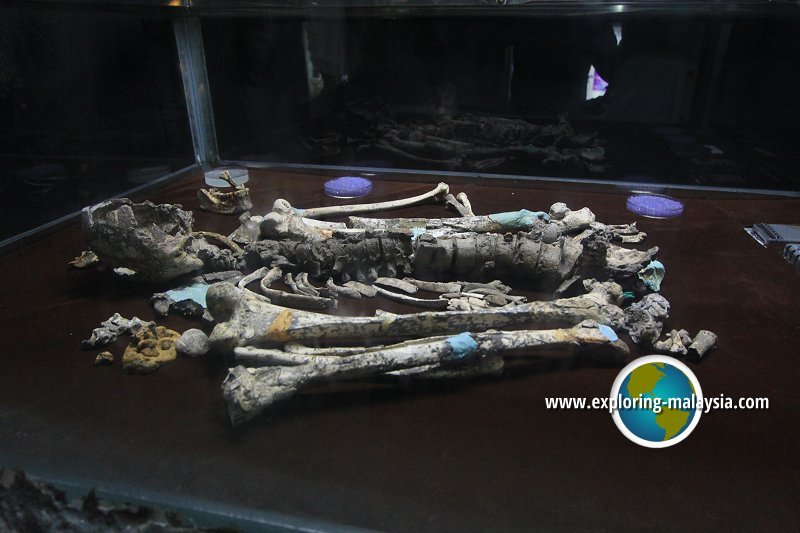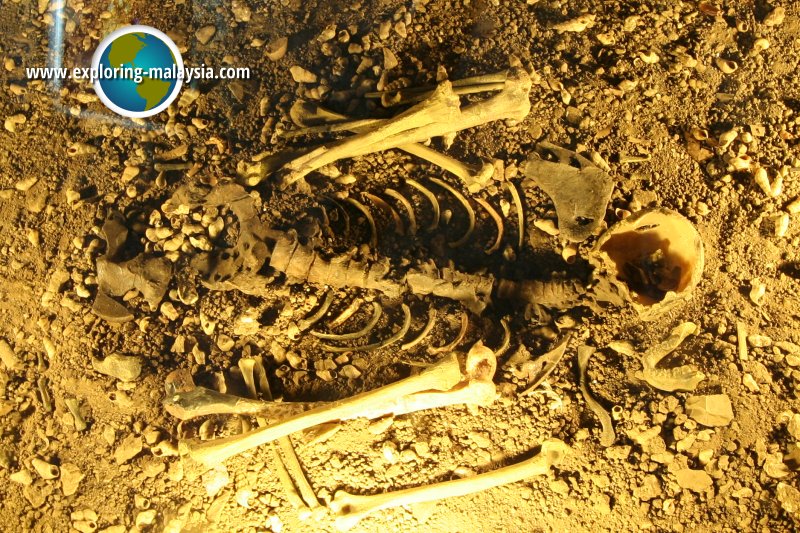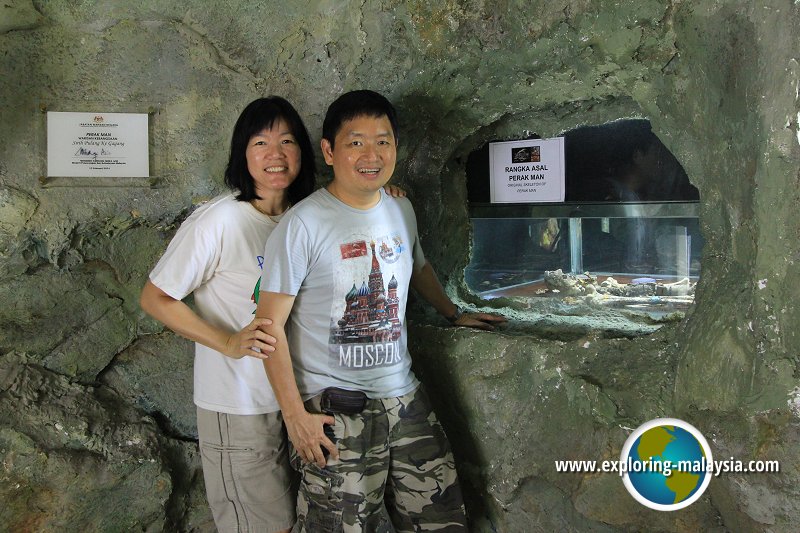 The actual remains of Perak Man. After years out of public view (and represented by a replica), the remains were finally put on display at the Lenggong Archaeological Museum in 2014. (6 September, 2015)
The actual remains of Perak Man. After years out of public view (and represented by a replica), the remains were finally put on display at the Lenggong Archaeological Museum in 2014. (6 September, 2015)
Perak Man is the oldest human skeleton found in Malaysia. He was discovered in 1991 by a group of researchers from the Universiti Sains Malaysia (USM) and the Department of Museum and Antiquities, led by Dato' Professor Zuraina Majid, made an important discovery in Lenggong Valley, at a site called Gua Gunung Runtuh. Gua Gunung Runtuh is a cave at Bukit Kepala Gajah, or Hill of the Elephant Head.
Perak Man is the only older than skeletal remains found at Gua Niah, Sarawak (a skull found at Gua Niah, though is dated to be 38,000 years old)2. It is also the only complete prehistoric human skeleton found in Malaysia.
The Perak Man was such an important discovery that a museum was built to house him, the RM3 million Lenggong Archaeological Museum, also known as the Kota Tampan Archaeological Museum, which was opened by the Sultan of Perak, Sultan Azlan Shah, in 2003. However, for years the museum could only display a replica of Perak Man, while the real thing was on a world tour, taken to Japan for an exhibition, or to Kuala Lumpur, or was in storage until proper display facilities are in place to accept him.
 Replica of the Perak Man. This was displayed at the Lenggong Archaeological Museum until the real thing arrived in 2014 (1 April, 2006)
Replica of the Perak Man. This was displayed at the Lenggong Archaeological Museum until the real thing arrived in 2014 (1 April, 2006)
The remains finally came home to the museum and was unveiled by the tourism and culture minister Datuk Seri Nasri Aziz on 15 February, 2014.
He was buried with his leg folded in a foetal position. Accompanying him in death are stone tools and remains of food, pointing perhaps to his position as a significant member of his tribe or community. Perak Man was about 157cm tall and was probably aged between 40-50 when he died, considered quite elderly for a person of the prehistoric age. He had an atrophied left hand and one finger was deformed.
 Timothy Tye with Perak Man (6 September, 2015)
Timothy Tye with Perak Man (6 September, 2015)
References
 Latest updates on Penang Travel Tips
Latest updates on Penang Travel Tips

Copyright © 2003-2025 Timothy Tye. All Rights Reserved.

 Go Back
Go Back